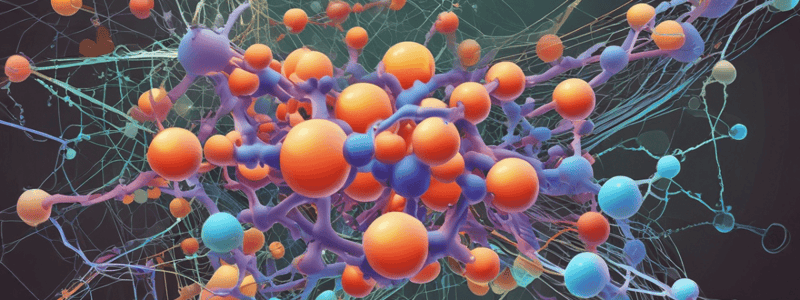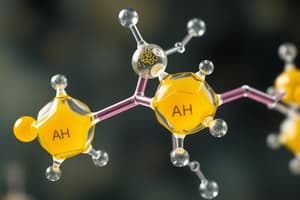Podcast
Questions and Answers
Pantothenic acid is a component of which coenzyme that functions in the transfer of acyl groups?
Pantothenic acid is a component of which coenzyme that functions in the transfer of acyl groups?
- Coenzyme A (correct)
- Coenzyme B12
- Coenzyme FAD
- Coenzyme Q
What functional group in CoA carries acyl compounds as activated thiol esters?
What functional group in CoA carries acyl compounds as activated thiol esters?
- Hydroxyl group
- Phosphate group
- Thiol group (correct)
- Amino group
Which of the following is NOT an example of an acyl compound carried by CoA?
Which of the following is NOT an example of an acyl compound carried by CoA?
- Methyl CoA (correct)
- Succinyl CoA
- Fatty acyl CoA
- Acetyl CoA
In addition to CoA, pantothenic acid is a component of which protein domain?
In addition to CoA, pantothenic acid is a component of which protein domain?
What are the most important sources of pantothenic acid?
What are the most important sources of pantothenic acid?
Flashcards are hidden until you start studying
Study Notes
Pantothenic Acid B5
- Component of coenzyme A (CoA), which facilitates the transfer of acyl groups.
- CoA possesses a thiol group that carries acyl compounds as activated thiol esters.
- Examples of these structures include succinyl CoA, fatty acyl CoA, and acetyl CoA.
- Also a component of the acyl carrier protein (ACP) domain of fatty acid synthase.
- Eggs, liver, and yeast are the richest sources of pantothenic acid, although it is widely distributed.
- Pantothenic acid deficiency is not well characterized in humans.
- No RDA (Recommended Dietary Allowance) has been established for pantothenic acid.
Studying That Suits You
Use AI to generate personalized quizzes and flashcards to suit your learning preferences.




